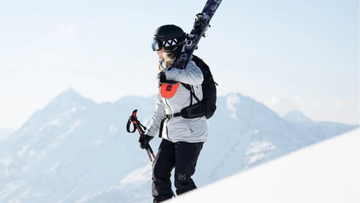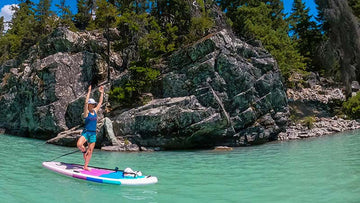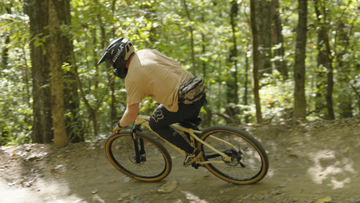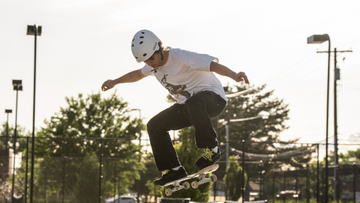5 Essential Tips To Prepare for 2022 Winter Adventures

While the cold weather is certainly a reason to stay indoors and hibernate, there are so many things that make winter one of the best seasons to enjoy your time outside.
From skiing in the mountains to snowboarding down the slopes to simply playing in the snow with your friends and family, there are plenty of ways to embrace this season.
When you are planning to go on a winter adventure, it is essential that you prepare yourself before the trip. This can be done in various ways, but the most effective way is to have a proper plan for your trip.
Lets dive in to some tips to help you prepare for your winter adventure:
1. Check the weather conditions
When you are planning a trip, it is essential that you check the weather and temperature before setting out for the trip. You should also have an idea about whether there will be snow or ice on the ground so that you don't end up in trouble.
Cold stress happens when your body loses heat faster than it can produce it. This can make you feel exhausted and weak, making it impossible for you to think clearly or move fast enough to keep your body warm.
To protect yourself from cold stress, try wearing adequate clothing before setting off on a long-distance hike or camping trip. In addition to layering your clothing in order to maintain a balanced body temperature and prevent hypothermia or frostbite while hiking in winter conditions, you should pack extra clothing with you.
2. Wear the right clothes
You'll want to stay warm, but that doesn't mean you have to be uncomfortable. Know your body. Many people will find they're warmer in several layers than they are in one or two thick ones, so think about what you're comfortable wearing and start building your outfit around that. Consider wearing extra layers of clothing such as long underwear and jackets or sweaters.

Choose waterproof boots that will keep your feet dry in case you step into some puddles during your hike. Well-fitting boots are critical for winter hiking and skiing. If your feet still feel cold after breaking them in, try buying insoles or adding another pair of socks below your regular ones.
Be sure to wear the right clothes and don't forget about gloves and hats that will help keep your body warm during your adventure!
3. Invest in the right gear
When you're heading out on an adventure, one of the most important things you need is the right gear. Going on a hike or ski trip without proper attire will make your trip less enjoyable.
Winter clothing should keep you warm and dry while also allowing you to move easily and breathe freely. Consider investing in quality outerwear, gloves, wool socks, and boots if you don't already have these items. Make sure you get yourself a pair of snow goggles to protect your eyes from snow blindness.

In addition to proper attire for winter activities, there are other items that should come along on any outdoor adventure. For skiing, it's also essential to invest in the right equipment, including skis, boots, and poles. You also need to have the right safety helmet in order to protect you from falls. You may even want to consider renting snowshoes and cross-country skis if you're going on a longer trek.
4. Plan ahead
Identify the risks and hazards associated with your trip beforehand so that you'll know how best to handle them when they happen during the journey itself.
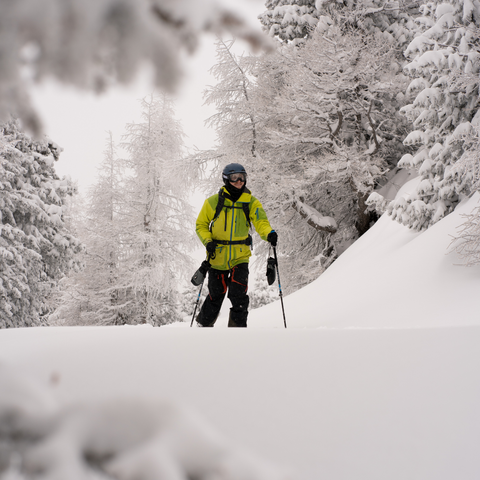
Prepare yourself physically and mentally beforehand. The last thing you want to worry about while on an adventure trekking trip is whether you are fit enough to handle the journey ahead of you or not.
You should know how long the trek will be, whether it will lead up mountains or through treacherous terrains or both. You should also find out how tough the path can get and prepare yourself mentally for it if you want to enjoy your trip fully without any worries at all.
Bring an emergency kit in case something goes wrong or someone gets injured; this could include disaster kits (blankets and warm clothing), first-aid kits (bandages, antiseptic wipes, and tweezers), flashlights or glow sticks.
In case of an emergency, it is important to know how much time it will take to get rescued and what facilities are available in the area where you are going.
5. Eat well and stay hydrated
Our body can lose a lot of water during an extended period of winter activities. It is essential that you are properly hydrated before going out into the cold. Bring a reusable bottle with you on your adventures that has a strap so that it can easily attach to your backpack or belt loop while you hike. This way, you will always have easy access to water when needed. If it is below freezing outside, make sure to warm up your water in order to prevent hypothermia and frostbite.
Depending on how long and vigorous your outing will be, it may be wise to pack along some snacks or energy bars in case you get hungry mid-hike or run out of energy midway through skiing down a mountain peak. Consider bringing food that doesn't require cooking such as protein bars or even apples, oranges, and other fruits if you plan on camping out during your adventure.
You can't go wrong by bringing along high-energy foods that are rich in complex carbohydrates and high in fiber. Take some protein bars, nuts, fruit, and other good sources of energy and nutrition. Remember that it's not just staying hydrated that matters — you also need to replace electrolytes, so think about packing some sports drinks or other beverages with potassium and sodium.
Make sure to bring extra water with you and don't forget about snacks if you'll be out for a long day or overnight trip!


